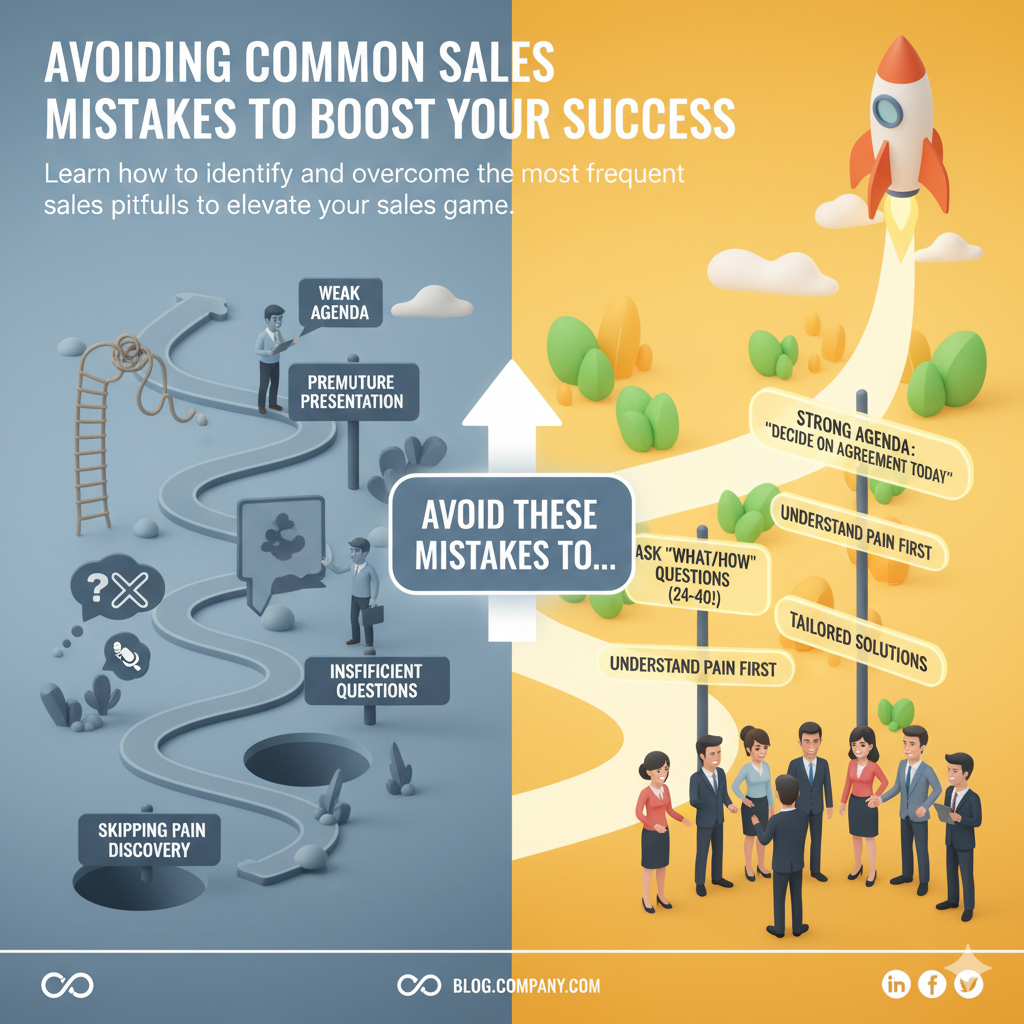Avoiding Common Sales Mistakes to Boost Your Success

Learn how to identify and overcome the most frequent sales pitfalls to elevate your sales game.
Strengthening Your Agenda-Setting for Greater Clarity
One of the most common mistakes salespeople make is setting a weak agenda. Effective agenda-setting is key to a productive sales meeting. A strong agenda provides clarity and sets expectations for both parties. Avoid vague statements like, "We'll see what we want to do next." Instead, be specific: "At the end of today, we will decide whether to sign the participation agreement."
By clearly outlining the meeting's objectives, you ensure that your clients understand the purpose and expected outcomes. This level of transparency builds trust and helps avoid any confusion, making the sales process smoother and more efficient.
Mastering the Art of Asking the Right Questions
Many salespeople fall into the trap of not asking enough questions. The importance of curiosity in sales cannot be overstated. In the pain funnel process, you should be asking at least 24 to 40 questions to uncover your client's real needs and problems.
Focus on using "what" and "how" questions, as these are less likely to make clients defensive compared to "who," "when," "where," or "why" questions. For example, instead of asking, "Why did you do that?" ask, "What led you to make that decision?" This approach helps you gather valuable information without putting your client on the defensive.
The Dangers of Premature Presentation and How to Avoid It
Jumping into the presentation phase too early is a common pitfall known as Premature Presentation Syndrome (PPS). Salespeople often get excited and rush to present solutions before fully understanding the client's pain points. This can erode trust and make clients less likely to buy.
Stay in the pain step until you have a comprehensive understanding of the client's issues. Only move to the presentation phase when you are confident that you have all the necessary information to tailor your solution effectively. Remember, the presentation step is sometimes optional—if the client is ready to close without it, let them.
Why Understanding Client Pain is Crucial for Sales Success
Skipping the pain discovery step and jumping straight to budget discussions is another frequent mistake. Understanding the client's pain points is crucial for making an effective sale. Pain drives decisions and motivates clients to invest time, resources, and money.
When you uncover and address these pain points, you can demonstrate the value of your solution in a way that resonates emotionally and intellectually with the client. This makes them more likely to commit to the necessary investments, whether it's time, resources, or money.
In summary, avoiding these common sales mistakes—weak agenda-setting, insufficient questioning, premature presentation, and skipping pain discovery—can significantly enhance your sales effectiveness. By implementing these actionable tips, you’ll build stronger client relationships and close more deals.

